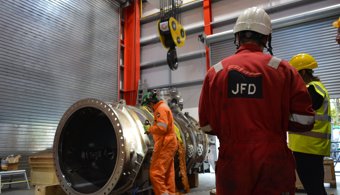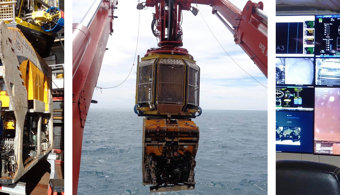
Strainstall wins contract to provide structural health monitoring for the new Forth Replacement Crossing.
The new Forth Replacement Crossing is to be a cable-stayed bridge carrying a motorway with two general lanes
of traffic plus a hard shoulder in either direction. Supported by three slender single column towers, the
completed structure, including its approach viaducts, will be 2.7km long.
Designed to complement the existing road and rail crossings over the Firth of Forth, the new bridge is the
result of extensive studies commissioned by Transport Scotland since 2006 and involving international teams of
engineers.

Richard Burmeister, managing director at StrainstallStrainstall is extremely proud to have been asked to partner with FCBC (Forth Crossing Bridge Constructors) in providing the structural health monitoring package of services and technology for the new Forth Replacement Crossing.
A key aspect of structural health monitoring is in data processing and analysis, and Strainstall will supply its highly advanced BridgeWatch® software for this purpose. This integrated package provides a comprehensive suite of web-accessible tools providing real-time information on the structure as well as archiving data throughout its service life.
Multi-million pound contract involves the provision of crucial monitoring technology and engineering support
to this very significant Scottish transport infrastructure project. It builds upon Strainstall’s acknowledged skills and expertise in the structural monitoring of key UK and international civil engineering developments.
Who:
Scottish Government
Services provided:
- Technology and services package comprising a comprehensive structural health monitoring system for the new cable-stayed bridge
- Range of sophisticated monitoring technologies to precisely monitor movements in real-time both during, and after, the construction phase
- Includes tri-axial strain gauges and accelerometers, load cells, temperature sensors, displacement transducers and automated monitoring and analysis
Benefits delivered:
- In-house, multi-disciplinary team including specialist staff with extensive civil engineering construction experience as well as skilled mechanical and electronic engineers
- Application of previous experience including that gleaned from the structural monitoring of the Jiangyin Yangtze Bridge in China and the Golden Jubilee footbridges of London’s Hungerford railway bridge
Download the Structural monitoring for the Queensferry Crossing case study.
More case studies
 Read article
Read article
James Fisher increases offshore wind asset operations and maintenance (O&M) portfolio
Read article
JFD hosts a dive tank test and demonstration
Read article
JFD tests a submarine hull at their National Hyperbaric Centre
Read article
Turnkey operations and maintenance at Greater Gabbard
Read article
James Fisher Renouvelables conducts UXO identification at RTE’s Saint-Nazaire Offshore Wind Farm
Read article
JFD conduct two remote audits for Heerema Marine
Read article
James Fisher Renouvelables selected by RTE to identify unexploded ordnance (UXO)
Read article



 Annual Report 2023
Annual Report 2023